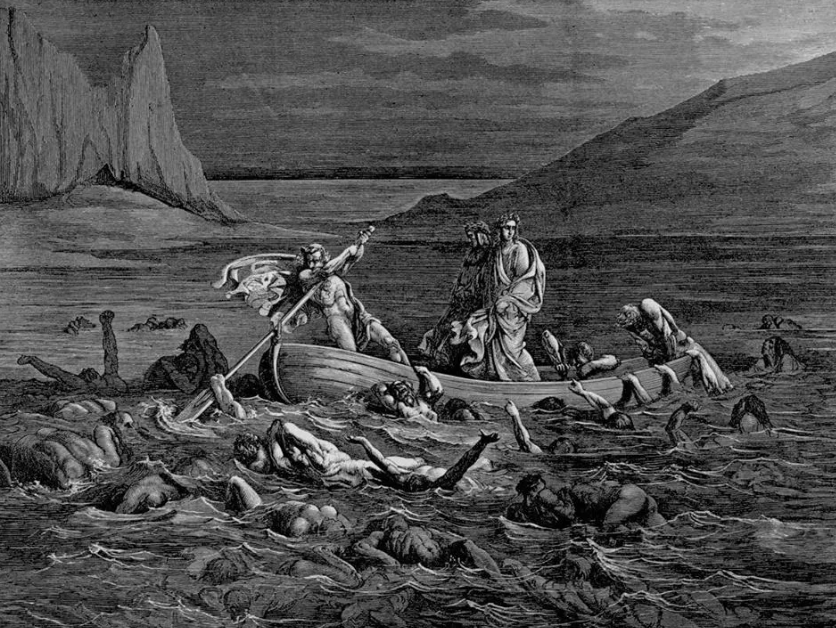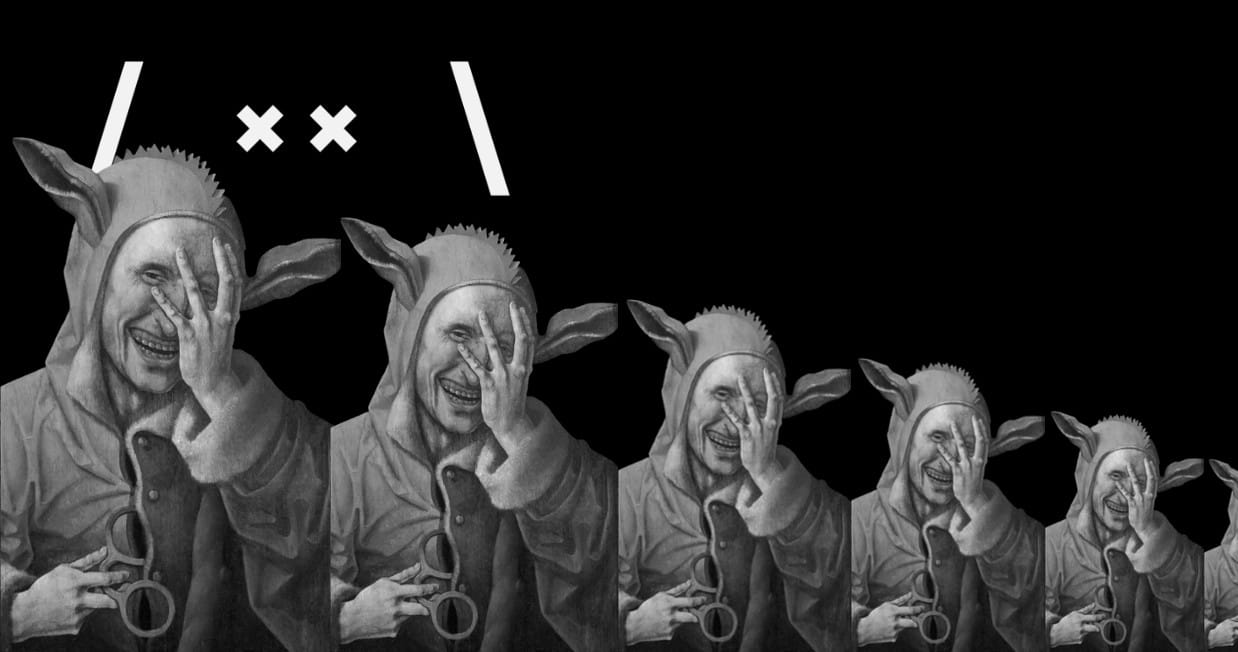Memes have always been part of the human experience; they represent the migration of cultural artifacts across generations—ideas that persist and gain significance, snowballing across epochs. They’re social focal points that carry value in the form of collective influence.
Today, people often associate memes with triviality or even silliness, largely because internet memes tend to be humorous. Yet, humor often resonates because it carries a kernel of truth.
“Memes propagate themselves in the meme pool by leaping from brain to brain via a process which, in the broad sense, can be called imitation. Just as genes propagate themselves in the gene pool by leaping from body to body via sperm or eggs, so memes propagate themselves in the meme pool by leaping from brain to brain.” - Richard Dawkins
Memes are the fundamental units of cultural transmission. In ancient societies, religious stories and shared histories were passed orally from person to person, with each storyteller adding their own perspective or embellishment. This process helped solidify community beliefs and values, embedding them deeply within the cultural fabric. Similarly, memes in the modern age are ideas or snippets of culture that travel from mind to mind, often evolving with each retelling or reinterpretation. Both methods rely on repetition, resonance, and the subtle transformation that occurs as each person interprets and shares them anew, allowing the essence of an idea to persist and adapt over time. In this way, memes are modern tools for storytelling, distilling complex ideas into simple, sharable formats that spread cultural messages.
Communities
Memes are the fundamental units of cultural transmission and communities are the respective biomes in which memes accrue value. Said another way, memes are ideas that matter and communities are who those ideas matter to.
Communities typically have a few defining characteristics:
1. Shared interests and goals
2. Communication and interaction
3. Structure and identity
4. Knowledge and resource sharing
5. Collective identity
Communities often begin with a minority of individuals committed to subverting the prevailing culture. The open-source software movement began with a small group of developers, like those behind the Linux project, who challenged the dominance of proprietary software and promoted freely accessible, modifiable code. The punk rock movement began in cities like New York and London, driven by a small, passionate community of musicians, artists, and fans who rejected the polished sounds of mainstream rock and the consumerism of popular culture. The VaccinateCA group formed as a cohort of techno-optimists committed to distributing vaccine availability information to as many people as possible in revolt of a logistically hamstrung government apparatus.
These communities each started hyper-localized, with a few true believers that shared a vision and collective conviction in the world’s malleability. They resulted in monumental impacts across tech, finance, culture, arts, entertainment and healthcare.
The Linux operating system has saved businesses and governments over $60 billion per year in licensing fees, Linux supports over 90% of the web’s infrastructure and Android, which is built on the Linux kernel, powers approximately 70% of all smartphones globally. Punk rock became a soundtrack for political and social uprisings in regions like Eastern Europe (e.g., Poland’s Solidarity Movement) and Latin America. Punk fans and bands popularized zines, self-published magazines often focused on music, politics, and alternative lifestyles– which became the grassroots precursor to modern blogging and independent digital journalism. VaccinateCA provided reliable vaccine availability information on 1,000+ vaccination sites while Google only offered 127 options– leading to greater efficacy of vaccine distribution.
This is grassroots, bottom-up, community-driven value creation.
Memes
Gold's first known use traces back to ancient civilizations in Mesopotamia, Egypt, and parts of Eastern Europe. By 4000 BCE, people valued gold for its unique beauty, rarity, and malleability, crafting it into jewelry, ceremonial items, and symbols of status. At the same time, copper, silver, and bronze were also popular for making tools and decorative objects. What made gold unique?
Unlike other metals, gold neither tarnishes nor corrodes, giving it an enduring quality that came to symbolize permanence and stability. The longevity of gold implies resistance to change, obsolescence, competition, and thus odds of continued survival into the future. Gold had become a meme with staying power because it mattered, it was unique in a way that resonated with humanity.
Gold is one of the largest asset classes in the world, yet it holds no utility—no productive use, no cash flow, no business model. It simply has value because we collectively ascribe value to it. It is a metal of limited inherent utility, but its perceived value stems from its beauty, rarity and what it represents in human culture. It is not a useful commodity like crude oil. It is not a valuable representation of ownership like Apple stock. However, as gold’s collective influence grew and more people adopted it, it became a store of value and even had the potential to be the world’s reserve currency, perhaps replacing another meme, the U.S. dollar.
One could argue that Bitcoin (BTC) was the original "meme coin" in the digital sense—an asset that initially seemed valueless but is now a global store of value across economies.
Bitcoin didn’t just introduce a financial revolution; it ignited a cultural movement. Through decentralized technology, it enabled peer-to-peer value exchange, financial autonomy, and the rise of global, grassroots communities bound by shared beliefs.
Bitcoin's genesis shortly after the 2008 financial crisis was pivotal, tapping into widespread distrust of traditional financial systems and creating a new narrative of decentralized value. People bought Bitcoin not because it had underlying cash flows but due to its unique value propositions: it was a store of value, a belief in future upside, and above all, a symbol of a new financial ecosystem free from corporate or individual control. A trust less asset that could anchor a trust less economy.
Bitcoin holders felt like part of something bigger—a community rather than merely financial investors. If you doubt this, search for "Apple tattoo" or "Uber tattoo" and compare it with a search for "Bitcoin tattoo."
Valuing Communities
Outsiders often overlook the power and value of communities, just as they misunderstood Bitcoin from the beginning. In the world of traditional finance, professionals often rely on methodologies taught at schools like Wharton—discounted cash flows, comparative analysis, cash flows, and EBITDA. As a result, companies have shaped their metrics and reporting around these frameworks. This limited view is precisely why many initially misunderstood the value of GameStop and why crypto assets like Bitcoin, as well as meme coins, are still misinterpreted by traditional finance.
Today, tremendous value lies in the communities these "companies" create. And "company" here can mean anything—a startup, a public company, a crypto protocol, an influencer, an idea or even a subreddit. Over time, companies will be evaluated not just by their profits but by the value their communities create and accrue— both internally and externally (i.e. Reddit + GameStop).
Over 86% of internet users trust Reddit and its communities more than advertisements when it comes to learning about new products and brands, Adults under 45 are more trusting of news on social media platforms than traditional news networks and 63% of Gen Z and Millennials trust influencers over brands. The average member of Gen Z spends 8.5 hours per day online, with 55% using smartphones for more than 5 hours daily and the average American sends 94 text messages per day.
TikTok's book community has single handedly driven bestsellers in publishing, with some books seeing up to a 1,000% increase in sales following community endorsement. Reddit’s r/WallStreetBets community were able to drive GameStop’s share price from under $20 to over $300 in a matter of days. After a collaboration, Bud Light's sales dropped 26%, and AB InBev's stock price fell by 20%, resulting in a loss of $26 billion in market valuation– all driven by their conservative community.
Communities escape traditional financial evaluation frameworks because their significance is impossible to project reliably. They are dynamic, often growing and shrinking and shifting. They do not fit neatly within an investment prospectus or the rows and columns of a financial model.
Rather than acknowledging the enduring power of communities, financial firms have often dismissed them as anomalies, reducing their impact to exercises in futility.
We believe that communities will continue to grow and wield greater power as a result of the velocity of increasing interconnectedness and the persistence of online interaction. The proliferation of digital platforms has made it easier than ever for individuals to find and connect with like-minded groups, breaking down geographical and social barriers that once limited community formation.
Memecoins: A Vessel for Community Ownership
Memecoins represent the perfect instrument for measuring the value of communities. They are tokenized representations of culture.
Memecoins, much like social networks, derive their value from the communities they gather. However, they represent a fundamental shift in how that value is distributed and controlled. Unlike platforms like Instagram or Facebook, where the value generated by user activity—content creation, engagement, and data—is captured primarily by the platform and its shareholders, meme coins invert this model by enabling users to become both creators and owners of the network's value.
Bonk was airdropped to users, quickly gaining traction as Solana’s meme coin of choice. The initial recipients were those who stuck around through the fall of FTX and continued contributing to existing communities, protocols and core pieces of infrastructure. Bonk became a tokenized representation of resilience in the face of adversity and enthusiasm spread within the initial recipients and beyond, boosting Bonk’s value and creating wealth within the ecosystem. This wealth stayed in the community, fueling projects like Bonkbot, which has generated enormous value to both Solana, users of the product and the Bonk token.
This is grassroots value creation—bottom-up, community-driven, with no outside investors, only human capitalists creating value for their community.
As we digitize more of the world's assets, more memes can be monetized, fabricated, and created spontaneously– broadening the concept of ‘meme’ to encompass anything of social significance and turning irrevocable smart contracts into tools for community monetization.
The Future
The future will look much like the past. Technologies will evolve, cities will expand, and culture will adapt to the tools and mediums of the age, but machines will not seize the memes of production. Culture—its creation, propagation, and endurance—cannot be outsourced to large matrices of floating-point numbers. While machines may generate artifacts that resemble memes—hollow, algorithmically optimized snapshots of familiar ideas mass-reproduced for fleeting attention—they will lack the deeper resonance and transformative power of true memes.
Throughout history, culture has been a collective endeavor, and memes are its smallest units of transmission, encoding the ideas and values of their time. Memes are more than mere fragments of media; they are vessels of shared meaning. Memes thrive not because they are created but because they are embraced. They emerge not from isolated creation but from the alchemy of shared understanding, humor, and emotion.
There’s a small Puerto Rican spot called Rinconcito on Losaida Avenue in Manhattan. They have no reservations, no rewards programs, points systems or electronic loyalty cards. They don’t ask for your email to send you targeted advertisements and they hardly have a way for you to contact them. You won’t find them on TikTok caving into the newest abomination of gluttony fueled trends or patenting their own sauce to bottle and sell to the masses.
They deal in culture. Good food cooked by honest people at fair prices– the same way it's been done for decades. Within every community there is definitive resonance, an acknowledgment that this is the way things ought to be. That’s the secret ingredient, its culture for sale.

